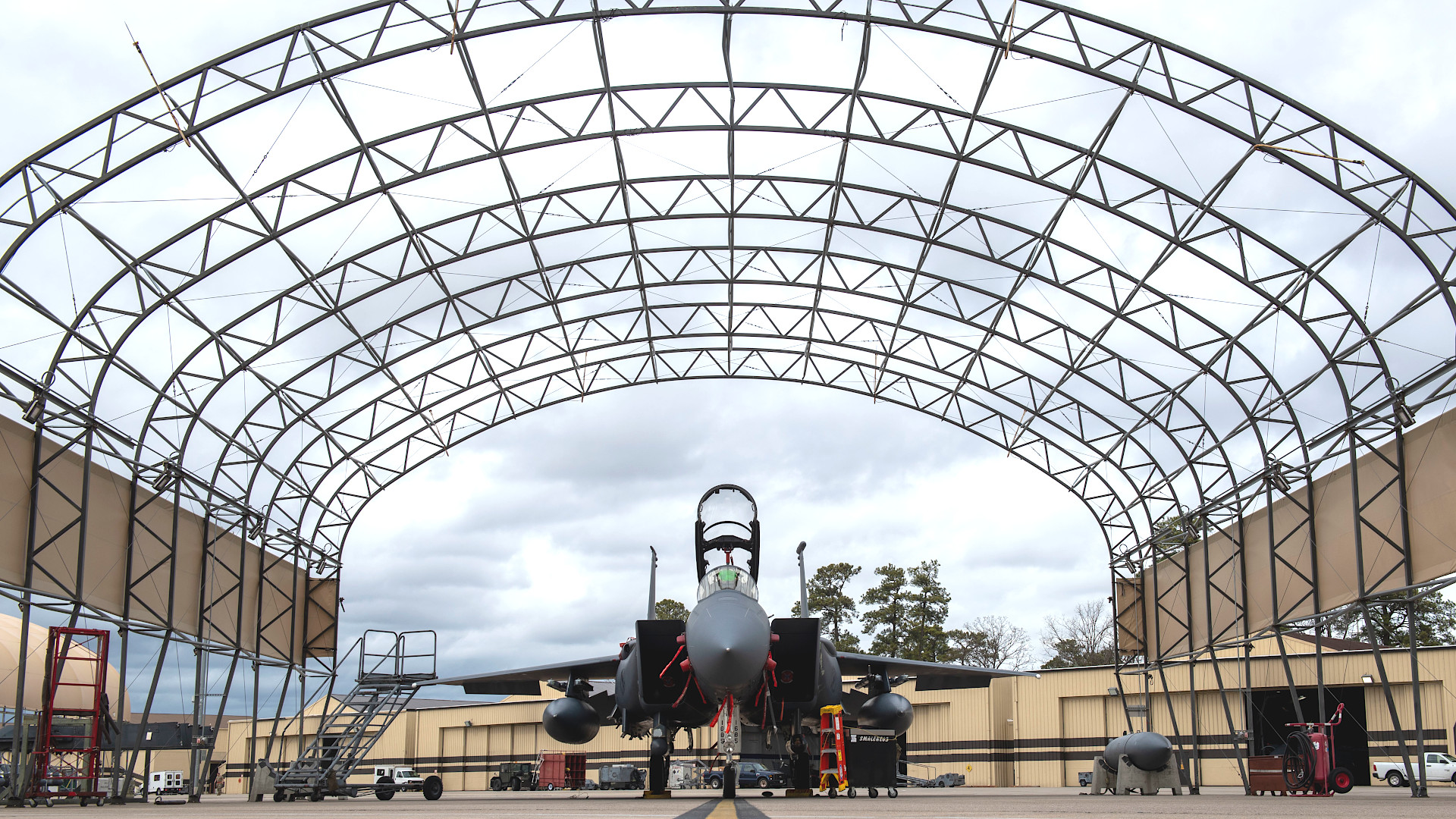Officials at Seymour Johnson Air Force Base in North Carolina are looking into the possibility of setting up physical barriers to help protect F-15E Strike Eagles there from being attacked by small drones. The anti-drone barricade idea underscores the danger that drones present right now to U.S. military facilities and critical civil infrastructure domestically, as well as to American forces overseas. It also speaks to how the U.S. military is still lagging in efforts to address these still-growing threats at home and abroad, as well as continued legal, regulatory, and other challenges.
The U.S. Air Force’s 4th Contracting Squadron, part of the 4th Fighter Wing at Seymour Johnson, put out its request for information (RFI) about potential options for “Counter Small Unmanned Aerial System Barrier” yesterday. The facility in North Carolina is one of two bases in the United States that host operational F-15E Strike Eagle squadrons. F-15Es are some of the Air Force’s most in-demand tactical combat jets. In April, forward-deployed Strike Eagles, including from Seymour Johnson’s 335th Fighter Squadron, played out an outsized role in defending Israel from incoming Iranian threats by downing more than 70 drones.
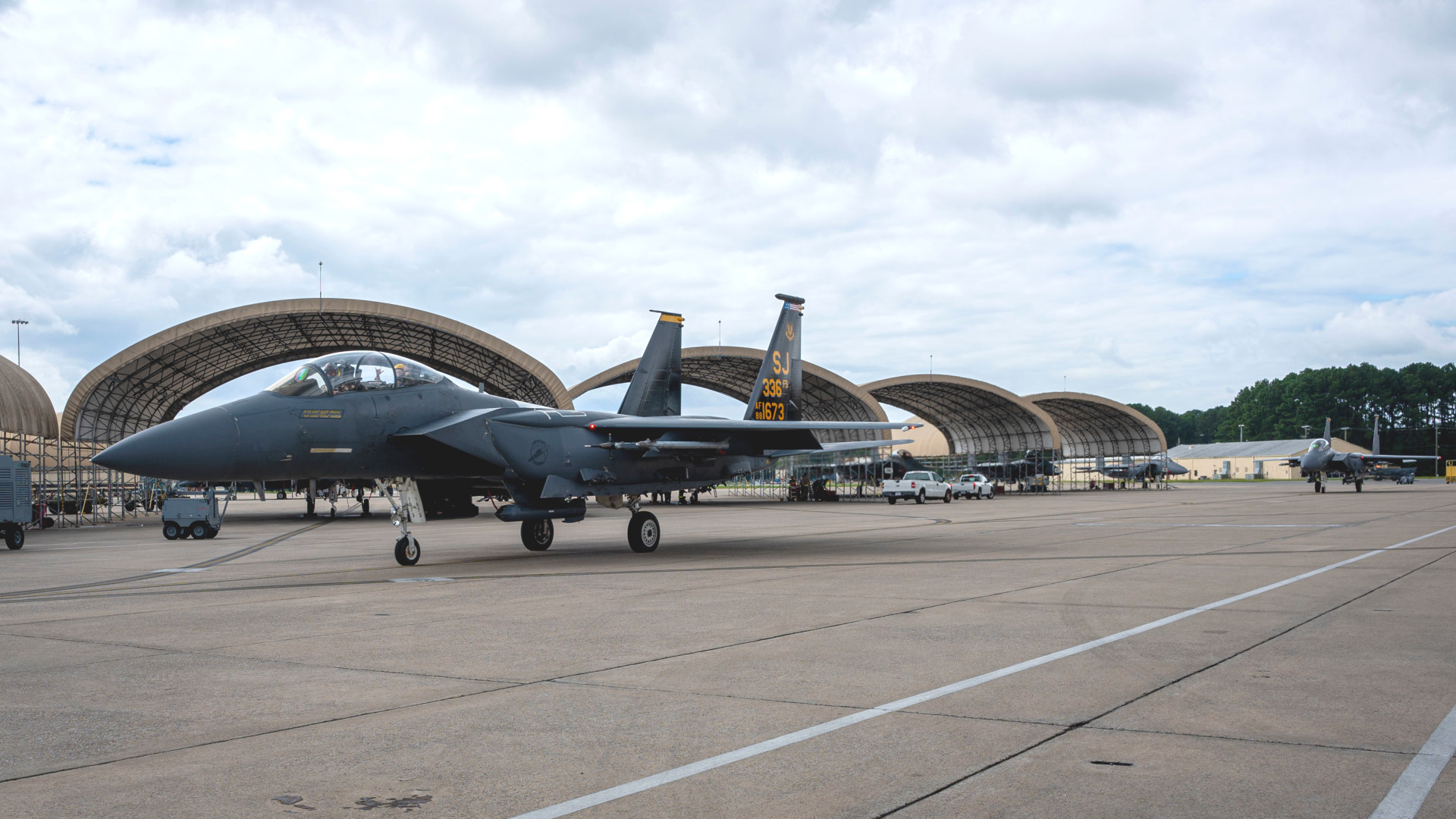
“Problem Statement: Small Unmanned Aerial Systems (s-UAS) disrupt airfield operations and agencies have limited response capabilities due to restrictions on counter measures posed by the Federal Aviation Administration (Section 130i, Title 10, USC),” the notice says. We will come back to that latter point.
“The requirement: Build a passive barrier that will prevent a Group 1 or Group 2 sUAS from making physical contact with an F-15E Strike Eagle using commercial off the shelf material,” it adds.
The U.S. military breaks uncrewed aircraft systems (UAS) down into five groups based on maximum weight, operating altitude, and top speed. Group 1 includes drones with weights up to 20 pounds, that can fly up to 1,200 feet, and can reach speeds of up to 100 knots. Group 2 is the next tier up covering uncrewed aerial vehicles that weigh between 21 and 55 pounds, can get up to 3,500 feet, and hit top speeds of up to 250 knots.
The requirements for the proposed anti-drone barriers at Seymour Johnson include that it “needs the strength to stop [a] 55lb drone traveling at 125 mph [nearly 109 knots]” and that “any space/gaps in material or design should not exceed six inches.”
How exactly the barriers might be emplaced is not entirely clear, but mention is made of existing flight line shelters with simple canvas covers, suggesting that this would be add-on protection for those structures.
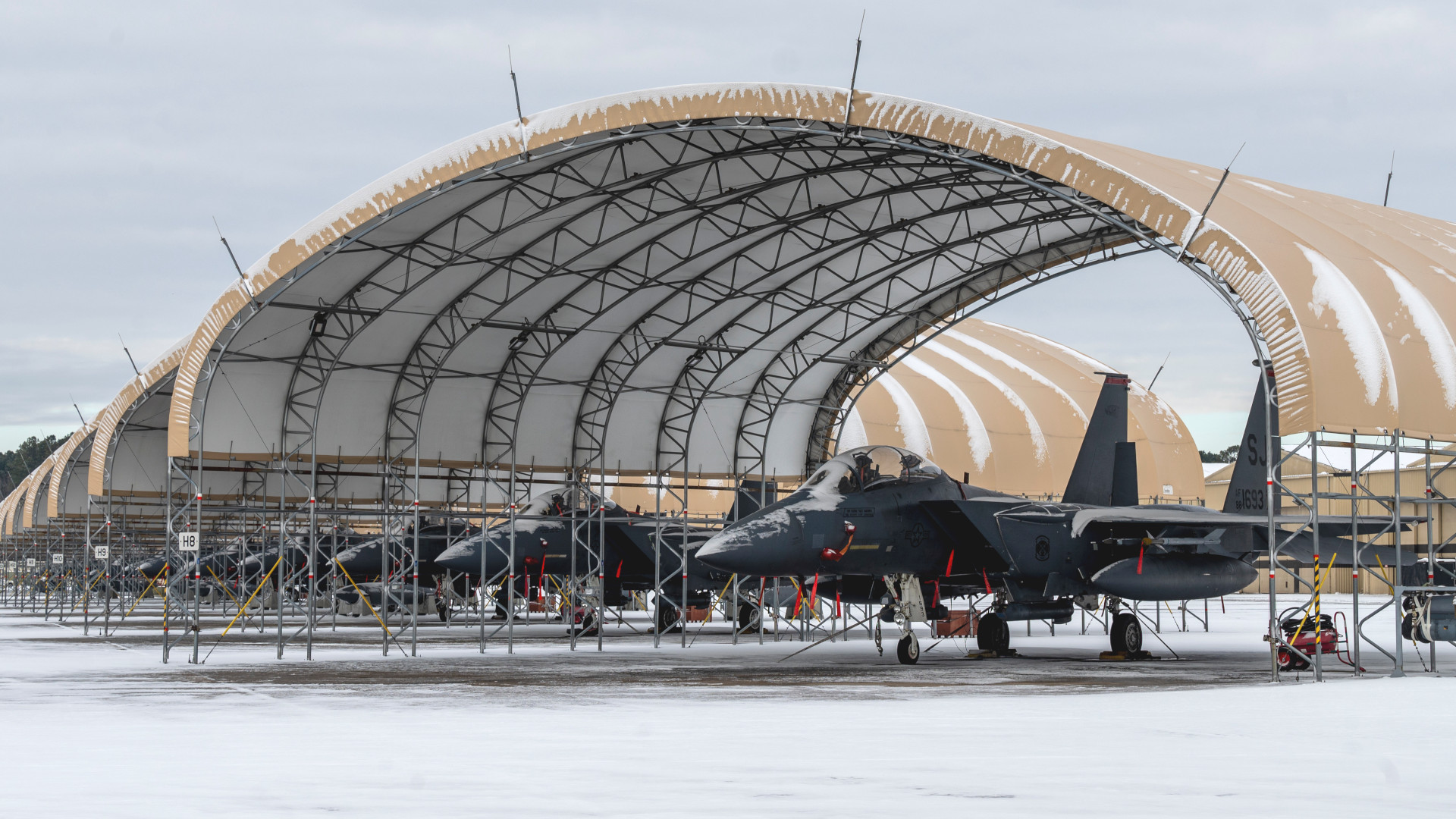
The “weight of material should be kept to a minimum to reduce structural load and facilitate rapid open/closing,” the RFI does note, adding that whatever the barriers are made of needs to be flame retardant. The “system [also] needs to be tightly secured in both open and closed positions.”
Whether or not any specific drone incidents at Seymour Johnson have prompted this barrier requirement is unknown and The War Zone has reached out for more information.
What is known is that drone incursions over or near U.S. military bases and training ranges, as well as critical civilian infrastructure, across the United States (including its outlying territories) have been an increasingly serious issue for years now, as The War Zone regularly reports. Just in March, we were the first to reveal that Langley Air Force Base in Virginia had been swarmed by drones for weeks last year. Those incidents prompted a major whole-of-government response, which you can read more about here.
Though many such drone-related incidents to date have appeared to be innocuous, they reflect very real potential threats that are only expected to grow in size and scope going forward. The barrier to entry to employing small drones, as well as weaponizing them to differing degrees, is also very low. The conflict in Ukraine has forced this reality fully into the mainstream consciousness, especially through the use on both sides of highly maneuverable first-person view (FPV) kamikaze drones. These are exactly the kinds of threats officials at Seymour Johnson now look to be seeking to address in part through physical barriers – which is also one of the many anti-drone countermeasures that have already emerged in Ukraine.
At the same time, it is important to stress again that these threats are not new or unknown to the U.S. military, and they are rapidly growing in frequency and sophistication.
“One day last week I had two small UASs that were interfering with operations… At one base, the gate guard watched one fly over the top of the gate check, tracked it while it flew over the flight line for a little while, and then flew back out and left,” now-retired Air Force Gen. James “Mike” Holmes, then head of Air Combat Command (ACC), said back in 2017.
“Imagine a world where somebody flies a couple hundred of those and flies one down the intake of my F-22s with just a small weapon on it,” Holmes added at the time.
As we noted at the time, jets just sitting idle and exposed on the flight line would be even easier targets for drones. In this way, an adversary could potentially knock out large numbers of aircraft on the ground, even in the United States using commercially available technology, before they ever have a chance to get in the fight.
Four years later, AFWERX, an internal Air Force technology incubator, put out a broad call for proposals for ways to defend the service’s bases at home and abroad from drones. As the new contracting notice from Seymour Johson Air Force Base shows, the U.S. military continues to be very much playing catch-up to addressing these now well-established threats.
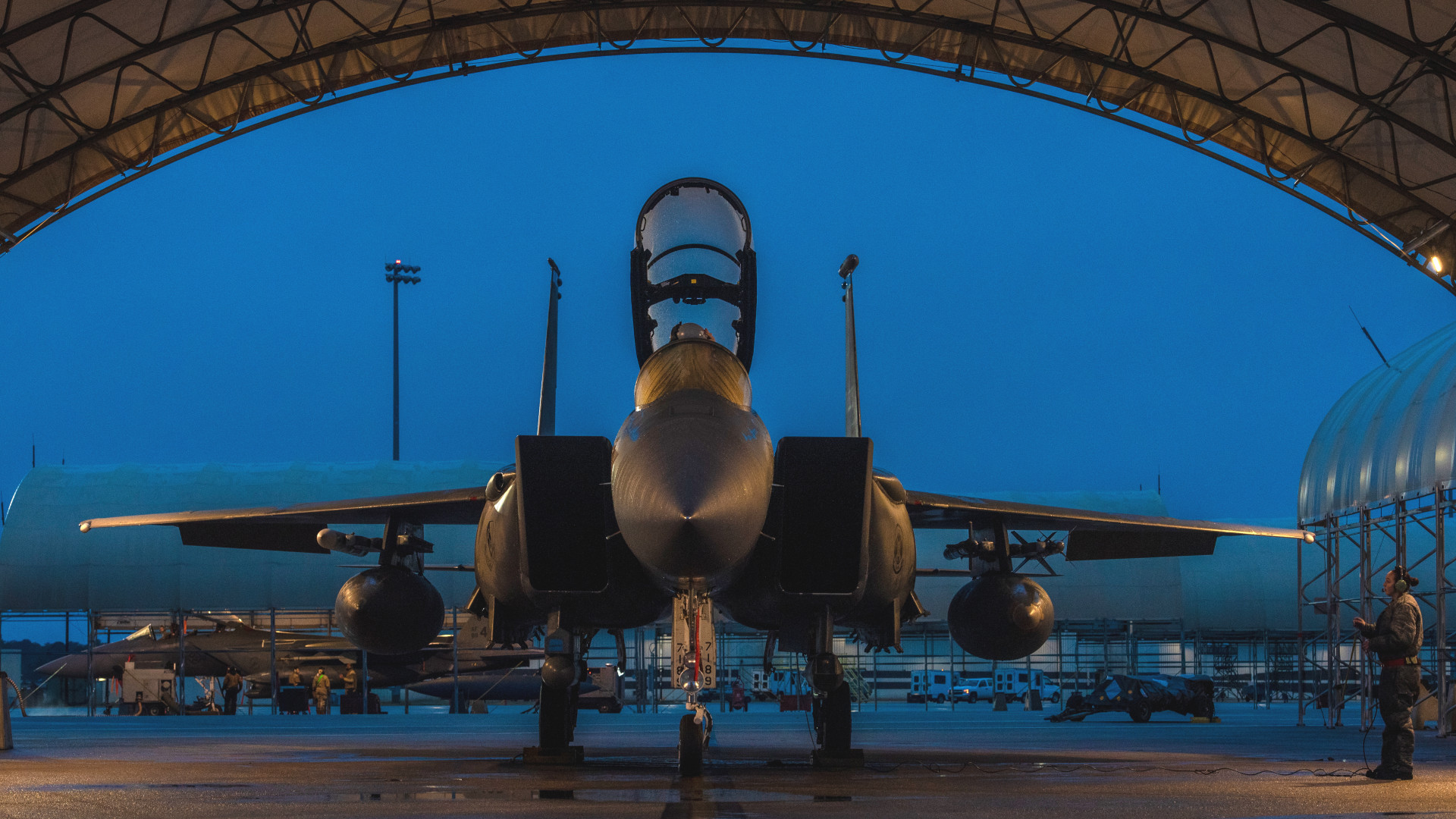
“You can only report what you see, and so that’s part of the challenge,” a senior U.S. defense official told reporters at the Pentagon just earlier this month when asked about drone threats to domestic facilities, according to Air & Space Forces Magazine. “But I’d say that’s usually two or three a week, total across the U.S. And it’s never primarily in one part of the country or another.”
Part of the issue, at least domestically, continues to be the morass of overlapping authorities, as well as competing legal and regulatory requirements. Back in 2017, Gen. Holmes noted that “I have no authority given to me by the government to deal with that [drone incursions].”
Even in 2017, efforts were being made to try to expand the authorities available to base commanders in the United States to respond to potentially hostile drones. The U.S. government has made additional domestic counter-drone policy changes since then.
However, as the new contracting notice from Seymour Johnson Air Force Base makes clear, there continue to be hurdles to taking more proactive measures to address drone threats.
Section 130i, Title 10, as cited in the Seymour Johnson anti-drone barrier RFI, does provide authority for “action” to be taken to include measures to “disrupt control of the unmanned aircraft system or unmanned aircraft, without prior consent, including by disabling the unmanned aircraft system or unmanned aircraft by intercepting, interfering, or causing interference with wire, oral, electronic, or radio communications used to control the unmanned aircraft system or unmanned aircraft” and the “use reasonable force to disable, damage, or destroy the unmanned aircraft system or unmanned aircraft.”

However, the statute also stipulates that “the Secretary of Defense shall coordinate with the Secretary of Transportation and the Administrator of the Federal Aviation Administration before issuing any guidance or otherwise implementing this section if such guidance or implementation might affect aviation safety, civilian aviation and aerospace operations, aircraft airworthiness, or the use of airspace.”
The FAA continues to impose significant limitations on the use of active anti-drone countermeasures in many domestic contexts. The War Zone has also highlighted in the past how obtuse and convoluted the existing mechanisms are for securing authorization to take action against uncrewed aerial threats within the United States can be, and that situation does not look to have improved substantially in recent years.
“The first problem is that our nation lacks adequate drone detection capability. We still rely on the early warning radars that served us so well during the Cold War,” Senators Jack Reed and Roger Wicker, wrote in a joint op-ed in the Washington Post in April. “Today, though, they are unable to detect, identify and track small aircraft at both high and low altitudes. Inside the United States, we can hardly track anything other than commercial aircraft. Almost none of our domestic military bases have the sensors to identify small drones.”
It’s worth noting here that the filter ‘gates’ on various air defense radars in North America were altered in February 2023, which immediately resulted in the tracking of a large amount of additional aerial activity. The radar changes followed a Chinese spy balloon intruding into U.S. airspace and soaring across the country over a period of days before being shot down over the Atlantic Ocean off the coast of South Carolina. Within a week, U.S. fighters had brought down three more still-unidentified objects flying in U.S. and Canadian airspace, as you can read more about here. Members of the Senate subsequently demanded a review of the U.S.-Canadian North American Aerospace Defense Command’s (NORAD) “aerospace warning and control mission and procedures.”
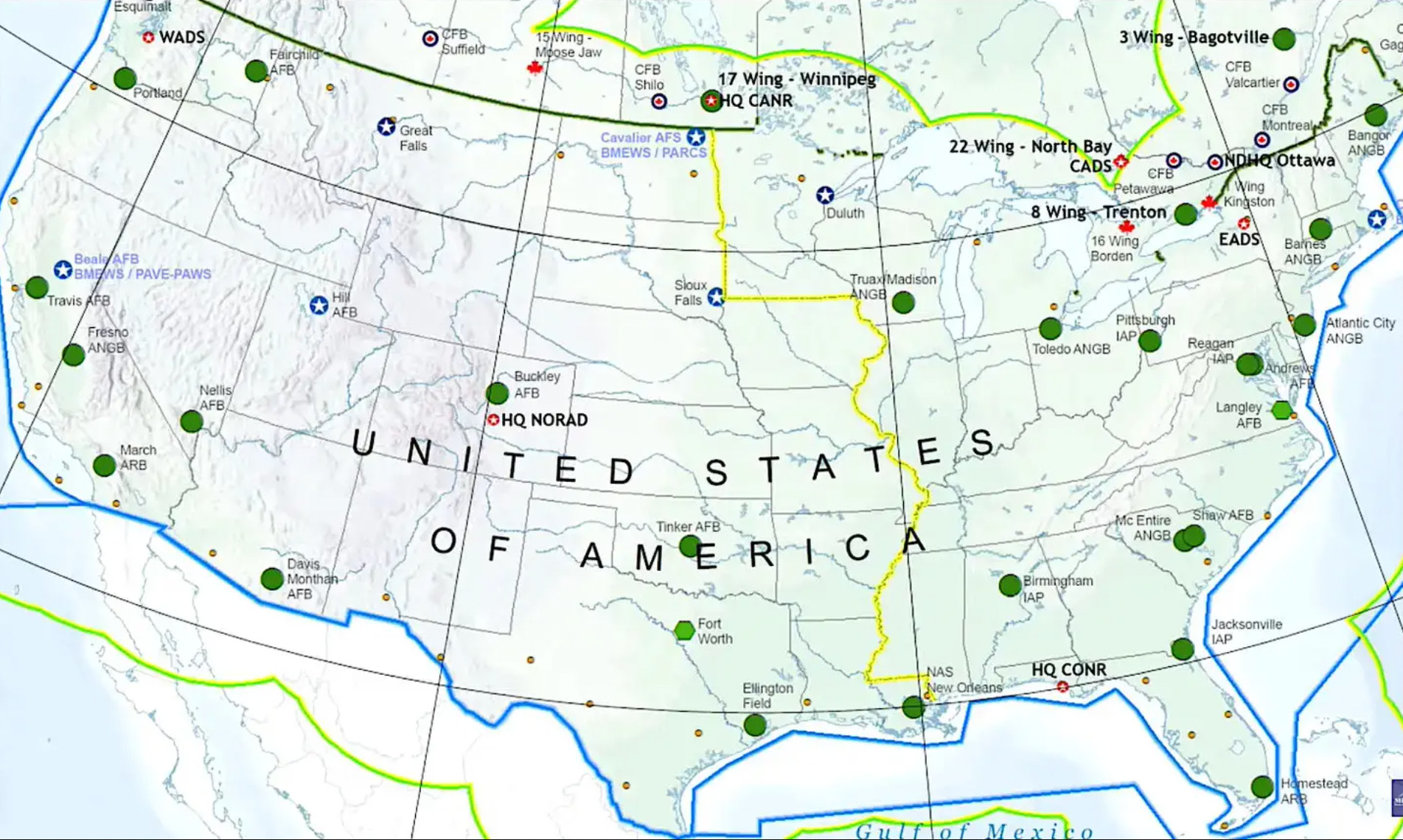
“If we fixed our tracking problem, though, a second issue would arise. U.S. agencies lack clear lines of authority about which agency is responsible for stopping these incursions. Instead, a dizzying maze of overlapping jurisdictions and inflexible bureaucracies confuses, rather than clarifies, crisis response,” Senators Reed and Wicker, a Democrat from Rhode Island and Republican from Mississippi, respectively, who are also the top members of the Senate Armed Services Committee, continued in their recent op-ed. “Government officials from an alphabet soup of agencies – Defense Department, Justice Department, Department of Homeland Security, Federal Aviation Administration – spend hours if not days simply discussing who can take action when a UAS is identified. Too often, low-altitude incursions are treated as a law enforcement matter instead of as a national security issue.”
Whether Seymour Johnson ultimately gets anti-drone barriers or not remains to be seen. If these added defensive measures are implemented there, they could quickly become commonplace at other bases.
Regardless, the new contracting notice underscores the U.S. military’s ongoing efforts to respond to the now well-established threat posed by uncrewed aerial systems, and its continued struggle in doing so.
Contact the author: Tyler@twz.com
